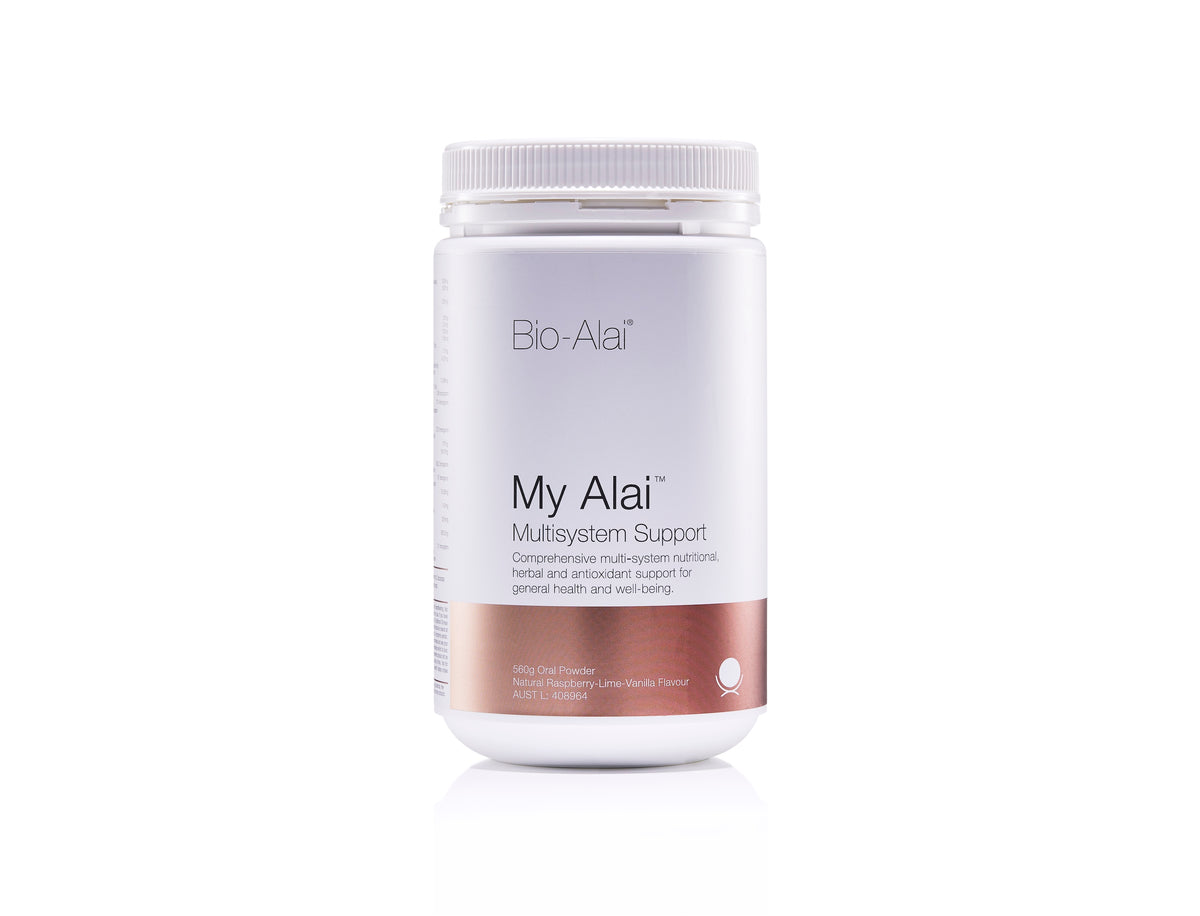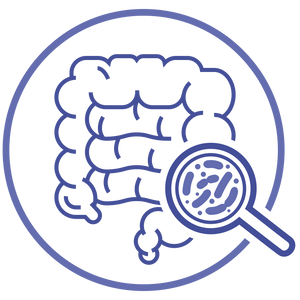LOOK AND FEEL GREAT AT ANY AGE
OPTIMISE YOUR HEALTH AND LIVE YOUR BEST LIFE
OPTIMISE YOUR HEALTH AND LIVE YOUR BEST LIFE
My Alai Multisystem Support® is a complementary medicine designed to offer comprehensive nutritient, antioxidant, and herbal support for the body’s foundational functions. The unique blend of active ingredients support the cellular processes essential for health. Simultaneously, targeting the underlying causes of accelerated ageing, inflammation, and chronic disease. In essence, My Alai Multisystem Support® enhances vitality and promotes general health and wellbeing.®
ORDER NOW





With ingredients used in Traditional Chinese Medicine to

My Alai Multisystem Support® is a nutrient-dense formulation with active ingredients that address the key physiological processes disrupted by modern life. It is classified under the category of a TGA-listed complementary medicine.
Unlike food-grade supplements, complementary medicines undergo strict regulatory assessments to ensure they meet standards set by the Therapeutic Goods Administration.
This designation confirms that My Alai Multisystem Support® contains clinically relevant doses of each active ingredient, aligned with scientific evidence to support the claims we make.
From HydroCurc 500mg
Equiv. to Choline 205.6mg
Equiv. min. dry fruit 35.8mg
Equiv. Piperine 2mg
Equiv. to Fibre 1.71g
Equiv. to Surcose 152mg
Equiv. to Fructose 38mg
Equiv. to glucose monohydrate 38mg
Equiv. min. dry root & stolon 4g
Equiv. to Glycyrrhizinic acid 200mg
Equiv. to Astaxanthin 2mg
Equiv. dry whole plant 1g
Equiv. dry fruiting body 2g
Equiv. min. dry seed 50.52g
Equiv. to procyanidins 400g
Equiv. to min. dry leaf 24.9g
Equiv. to Catechins 689mg
Equiv. to Epigallocatechin-3-0-gallate 415mg
Equiv. dry leaf dry 3g
Equiv. min. dry root 3g
Equiv. Ginsenosides calculated as Ginsenosides Rg1, Re, Rf, Rb2, Rb1, Rc, Rd, 75mg
Equiv. Levomefolic acid 400 micrograms
Ingredient description
Equiv. to thiamine (Vitamin B1) 1.2mg
Equiv. to pantothenic acid (Vitamin B5) 4mg
Equiv. to calcium 366.4micrograms
Equiv. Pyridoxine (Vitamin B6) 11.5 mg
Equiv. to Selenium 150 micrograms
Equiv. to Zinc 15mg
Equiv. to Chromium 50 micrograms
Equiv. to Molybdenum 40 micrograms
Equiv. to Iron 8mg
Equiv. to Magnesium 150mg
Equiv. to lodine 100 micrograms
Equiv. to Potassium 30.8 micrograms
Equiv. to Manganese 1.85mg
Equiv. to Copper 200 micrograms
The recommended daily dose is 20g or two scoops. Add two scoops to 250mls of water, juice or a smoothie and mix well.
For simplicity, you can take the full dose in the morning. Alternatively, you can split the daily dose by taking one scoop twice a day.
It's best to mix it into a smoothie as a complete meal or take it after food, rather than on an empty stomach.
Do not exceed the recommended daily dose as My Alai Multisystem Support® is a therapeutic formulation not a functional food. Adherence to dosing guidelines is important to avoid unwanted effects.
Supplements are best used alongside a healthy diet. Sign up for the Bio-Alai® Personalised Nutrition Program for a diet tailored to your needs.
Storage: Store at room temperature.
Shelf-life: Two (2) years however we recommend using the formulation within six (6) months of opening.